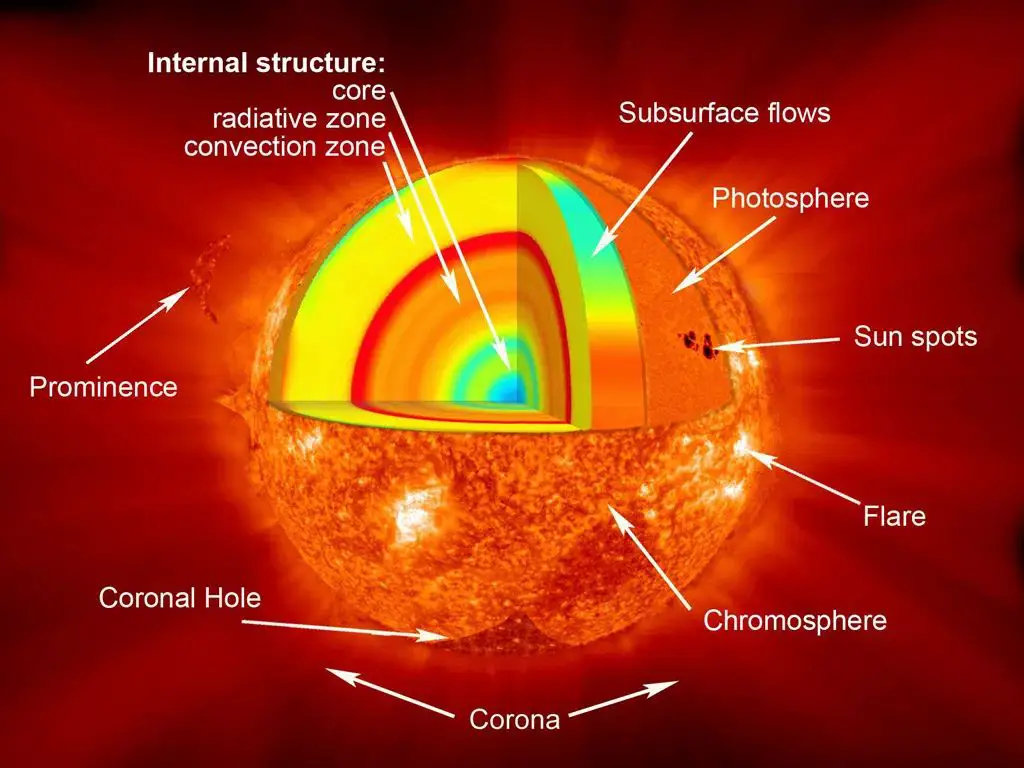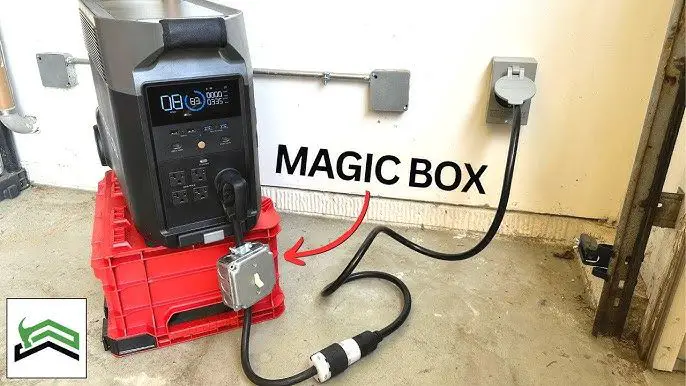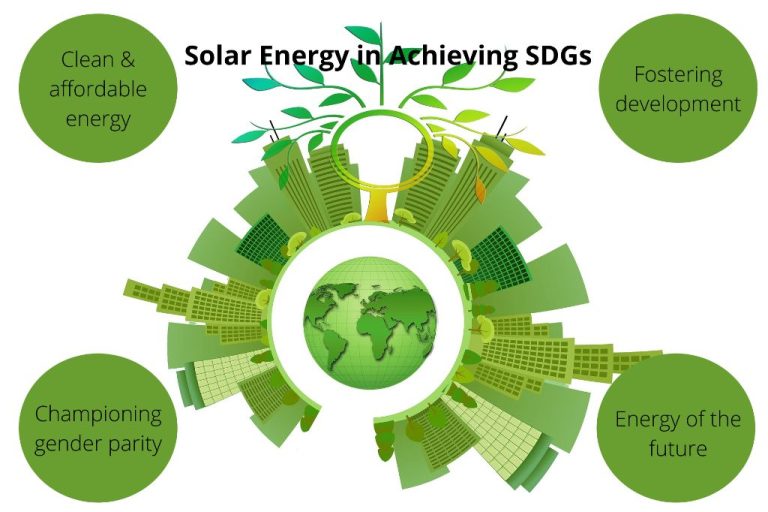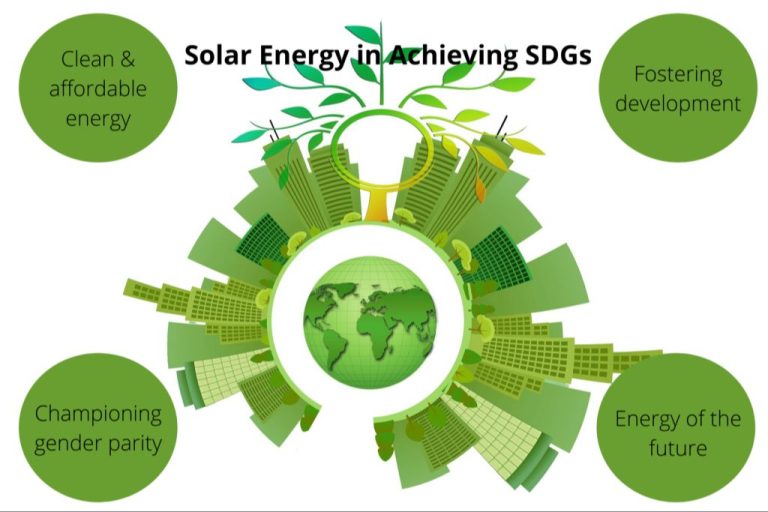What Process Creates Energy In The Sun?
The sun produces energy through a process called nuclear fusion. Deep in the sun’s core, hydrogen atoms fuse together to form helium, releasing gamma rays in the process. The gamma rays interact with surrounding particles, gradually working their way up through the sun’s radiative and convective zones. Eventually, the energy is emitted from the sun’s surface as sunlight and heat. This nuclear fusion process allows the sun to shine steadily for billions of years, providing the light and warmth that sustains life on Earth.
Nuclear Fusion
The sun produces energy through a process called nuclear fusion that occurs in its extremely hot core. Nuclear fusion is when two or more atomic nuclei fuse together to form a heavier nucleus, releasing an enormous amount of energy in the process.
Specifically, nuclear fusion occurs when two hydrogen atoms fuse together to create one helium atom. This process releases gamma ray photons, neutrinos, and kinetic energy. Inside the sun’s core, extreme heat and pressure provide the ideal conditions for hydrogen atoms to fuse continuously.

The core’s inner temperature reaches 15 million degrees Celsius. At this temperature, hydrogen atoms move rapidly enough to overcome their electrostatic repulsion and fuse together. This nuclear fusion process releases energy that originally came from gravitational collapse when the sun first formed. The fusion of hydrogen into helium provides the radiant energy that powers life on Earth.
Protons and Neutrons
The sun undergoes nuclear fusion, which is when the nuclei of lighter atoms fuse together to form heavier atoms. The sun’s core is very hot and dense, providing the ideal environment for fusion. The main elements involved are hydrogen and helium.
Hydrogen atoms have just one proton in their nucleus, while helium atoms have two protons and two neutrons. In order for fusion to occur, hydrogen nuclei (protons) must collide with enough energy to overcome electrostatic repulsion. When this happens, the protons fuse together to form a deuterium nucleus with one proton and one neutron.
The deuterium can then fuse with another proton to form a helium-3 nucleus with two protons and one neutron. Finally, two helium-3 nuclei collide and fuse, forming a stable helium-4 nucleus with two protons and two neutrons. Thus, multiple protons fuse together and are converted into neutrons in the process of forming helium.
The protons and neutrons bind together within the nucleus despite repulsive electromagnetic forces between them. Strong and weak nuclear forces overcome the repulsion at extremely close ranges, allowing stable nuclei to exist. So in summary, the fusion of protons into neutrons within atomic nuclei provides the fundamental mechanism for helium production and energy generation within the sun.
Helium Production
The sun produces helium through the process of nuclear fusion. At the extremely high temperatures and pressures in the sun’s core, hydrogen atoms fuse together to form helium. This happens through a multi-step process:
First, two protons (which are the nuclei of hydrogen atoms) fuse together. But the end product of this first step is not stable, so it quickly decays into a deuterium atom (which contains one proton and one neutron) along with a positron and a neutrino.
Next, the deuterium atom fuses with another proton, creating a light isotope of helium called helium-3, which contains two protons and one neutron. Again, this helium-3 is not stable.
Finally, two helium-3 nuclei fuse together to form stable helium-4, which contains two protons and two neutrons. This helium-4 nucleus is stable and no longer undergoes fusion.
In each step of this process, a small amount of mass is converted into energy, according to Einstein’s famous equation E=mc2. This energy is eventually radiated out from the sun’s surface as heat and light. Overall, nuclear fusion of hydrogen into helium is what allows the sun to shine for billions of years.
Gamma Rays
The nuclear fusion process that takes place in the core of the sun produces tremendous amounts of energy in the form of gamma rays. These are extremely high frequency electromagnetic waves that contain incredible amounts of energy.
When two hydrogen nuclei fuse together to form a helium nucleus, a small amount of mass is converted to energy as per Einstein’s famous equation E=mc^2. This mass difference is expelled in the form of a gamma ray photon.
The levels of energy produced by fusion in the sun are immense. It is estimated that the sun converts over 4 million tons of matter to energy every second in the form of gamma rays! The core of the sun is an extremely hot and dense plasma where fusion occurs, allowing the gamma rays to move freely outward.
As the gamma rays radiate outward from the core, they continuously collide with atoms in their path. This causes them to lose energy over time, eventually decaying to lower energy photons in the visible light spectrum that can escape the sun’s surface and travel to Earth. This multi-step process transforms the incredible power of fusion into the heat and light that makes life on our planet possible.
Radiative Zone
The sun’s radiative zone extends from the core to about 70% of the way to the sun’s surface. In this zone, the plasma is so dense that photons can only travel a short distance before being absorbed and re-emitted. This process takes a very long time, with photons taking over 170,000 years to travel from the core to the top of the radiative zone. As photons slowly make their way outward through the radiative zone, they transfer energy to the plasma, gradually heating it up. The plasma also cools as it rises, allowing energy to be transferred outward through the radiative zone. This extremely slow, radiative process of energy transfer is why it takes so long for photons produced in the core to make their way to the sun’s surface. So while nuclear fusion reactions produce enormous amounts of energy in the core, that energy is very slowly transported to the outer layers of the sun by radiative diffusion in the radiative zone.
Convective Zone
The convective zone is the outer layer of the sun’s interior, where heat is transferred mainly through convection. As nuclear fusion reactions in the core produce enormous amounts of energy, the core reaches extreme temperatures of 15 million degrees Celsius. This generates high pressure that causes the solar material to expand outward.
As the hot material from the core rises up into the convective zone, it cools and becomes denser than the surrounding material. This denser plasma sinks back downwards, creating a continuous circulation of rising hot material and sinking cool material called convection currents. The convection currents transport heat from the solar core out to the surface.
The process of convection allows efficient heat transfer through the convective zone. Without convection transporting heat, the solar core would become extremely hot while the surface layers would be much cooler. Convection ensures a steady flow of energy from the core to the surface, enabling the high temperatures that cause the sun to shine brightly.
Sun’s Surface
The sun’s surface layer is called the photosphere. This is the layer that emits the light and heat that we see and feel here on Earth. The photosphere is hundreds of kilometers thick and has a temperature of around 5,700 Kelvin. While the core of the sun is extremely hot at 15 million Kelvin, the outer layers are much cooler by comparison.
The light and heat from the sun’s core is transferred outward through the process of radiation. High-energy photons carry the sun’s energy through the radiative zone underneath the photosphere. When the photons reach the photosphere, they can finally escape outward as sunlight. The photosphere is still dense enough that photons interact with matter frequently, being absorbed and reemitted in random directions multiple times before escaping into space.
The heat transfer changes as you move upward from the photosphere. In the next layer called the chromosphere, heat is transferred primarily through convection. Hot plasma rises up, transfers heat, then sinks again in a convection current. This process allows the temperature to decrease further as you move outward from the sun’s core.
Light and Heat
The sun’s surface, known as the photosphere, releases the light and heat that we experience here on Earth. The photosphere is the visible “surface” of the sun where temperatures reach about 10,000°F (5,500°C). It emits solar energy primarily in the form of visible light, infrared radiation, and ultraviolet radiation.
The visible light from the photosphere gives the sun its bright, white appearance. This visible light from the sun provides the energy that allows plants to photosynthesize and helps warm the planets in the solar system. The infrared radiation emitted from the photosphere is experienced as heat and provides warmth to the Earth. The ultraviolet radiation from the photosphere is responsible for sunburns and has other biological effects.
The intense light and heat from the sun’s photosphere originates from the nuclear fusion reactions occurring deeper within the sun’s core. As light energy slowly makes its way to the surface, it gets scattered and absorbed numerous times. By the time the light reaches the photosphere, its intensity and spectral composition is suitable for life on Earth. The photosphere therefore serves as the interface between the sun’s interior nuclear furnace and the light and heat that makes life possible on our planet.
Conclusion
In conclusion, the sun produces energy through the process of nuclear fusion. At the core of the sun, extreme heat and pressure cause hydrogen atoms to fuse together into helium. This fusion reaction releases tremendous amounts of energy in the form of gamma rays. The gamma rays make their way outward through the radiative and convective zones of the sun before reaching the sun’s surface. At the surface, the gamma rays are transformed into visible light and heat that radiate into space. The nuclear fusion at the sun’s core supplies nearly all the light and heat that makes life on Earth possible. After billions of years, the hydrogen fuel will eventually run out and the sun will come to the end of its life cycle. But fortunately, we have several billion years before we need to worry about that. The nuclear fusion process of our local star provides a powerful example of how matter can be converted into energy.






